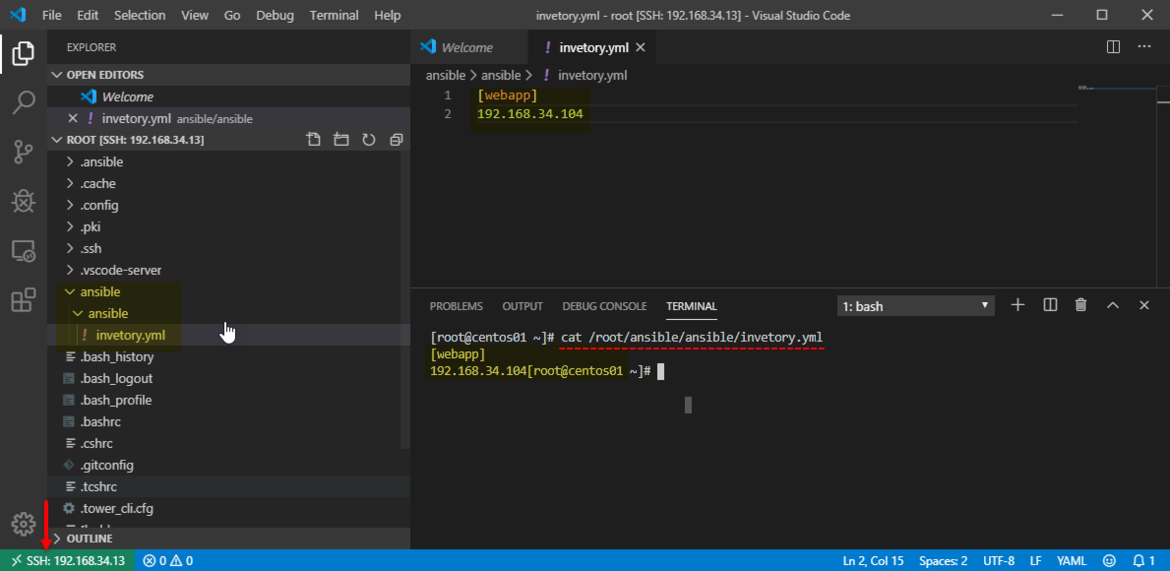

- #HOW TO CONFIGURE TO OPEN VISUAL STUDIO CODE FROM TERMINAL FULL#
- #HOW TO CONFIGURE TO OPEN VISUAL STUDIO CODE FROM TERMINAL WINDOWS#
You’ve likely used a program called TigerVNC to connect to the School of CSE’s computers before, which provides you a visual interface with a full desktop environment, very similar to the experience you would get out of sitting in front of a physical computer on campus. Just copy the settings to your VSCode user settings and change the configuration there.We’re going to be setting up a text editor called Visual Studio Code, or VS Code, to remotely work on the CSE computers without needing a VNC client! Why are we doing this? To change one of these settings, you don't have edit package.json. On Linux and macOS, you can find the extensions under ~/.vscode/extensions.
#HOW TO CONFIGURE TO OPEN VISUAL STUDIO CODE FROM TERMINAL WINDOWS#
You can find them all in the package.json file in "$env:UserProfile\.vscode\extensions\de-runner-0.8.7" on a Windows machine. To stop running the code, you can press CTRL+ALT+M.Ĭode Runner offers a variety of settings I don't cover in this blog post. If you only want to run selected code, you can right-click and click Run Code in the context menu, or you can press CTRL+ALT+N after you select the code. Also note that Code Runner uses its own terminal and not the one you opened before. Note that Code Runner will run the version of the script you've last saved and not the current code in the editor window. As in PowerShell ISE, you can execute the entire script by simply clicking the Run Code icon or pressing CTRL+ALT+N. Next, press Ctrl+Shift+P and type "run sel." Then chose Terminal: Run Selected Text In Active Terminal.Ĭonfiguring Code Runner to execute in the TerminalĬode Runner offers several ways to run code from the editor. Now select one of the PowerShell terminals and then mark the code you want to execute in the editor. Once you've saved the file, syntax highlighting will work. ps1 because otherwise VSCode won't recognize that your code is PowerShell. It is important you've added the extension. Open a new file first (CTRL+N), and save it (CTRL+S). Let's see first how the code-execution feature built into VSCode works. But no worries-we will fix that in a moment. Unfortunately, the built-in way to run code from the VSCode editor is also a bit longwinded. Moreover, the PowerShell extension always executes code in its own terminal, which does not support syntax highlighting, and it uses Windows PowerShell 5.1 instead of PowerShell Core 6.0. If you want to execute an entire script, you first have to select the complete code, which is not what we know from ISE. You can also write a quick little script if a one-liner is not going to do the job.Ībove, I mentioned that the PowerShell extension allows you to execute code from the editor by pressing F8. Sometimes I have multiple versions of the command in the editor and just have to select the one that fits best for the current task. This is useful if you run the same or a similar command many times a day or if you are unsure about the correct syntax and have to edit your command several times until it finally works. The main reason I like to use a scripting environment as a console is you can type your command in the editor and run it from there.

PowerShell features in VSCode Running selected code from the editor ^


 0 kommentar(er)
0 kommentar(er)
